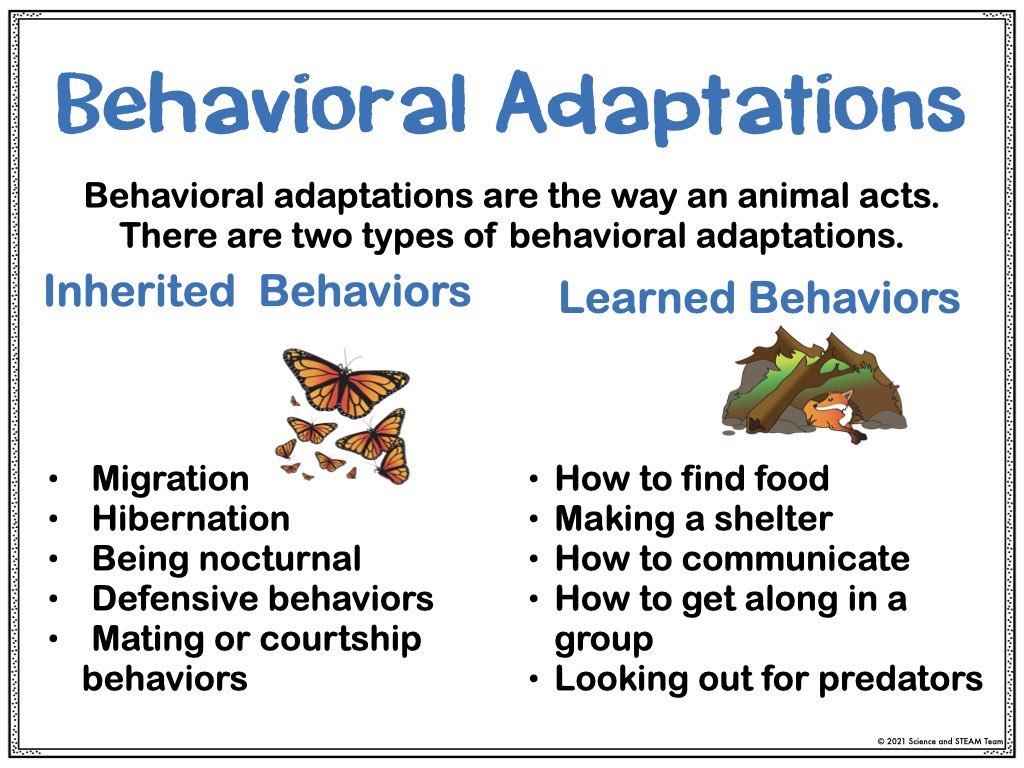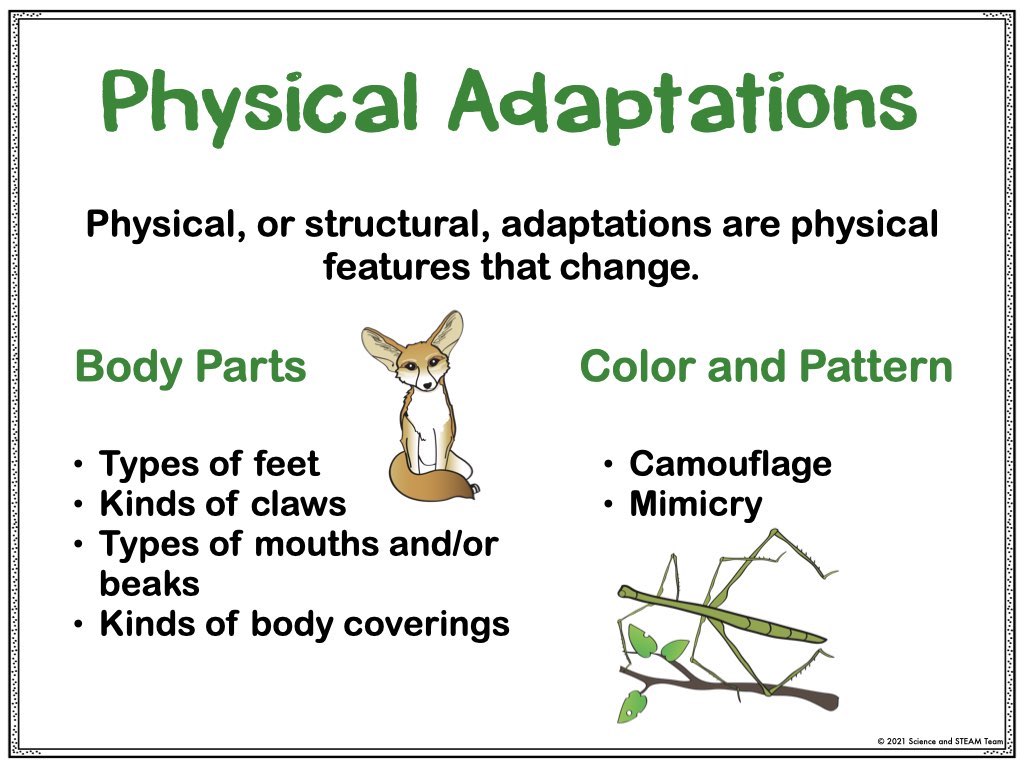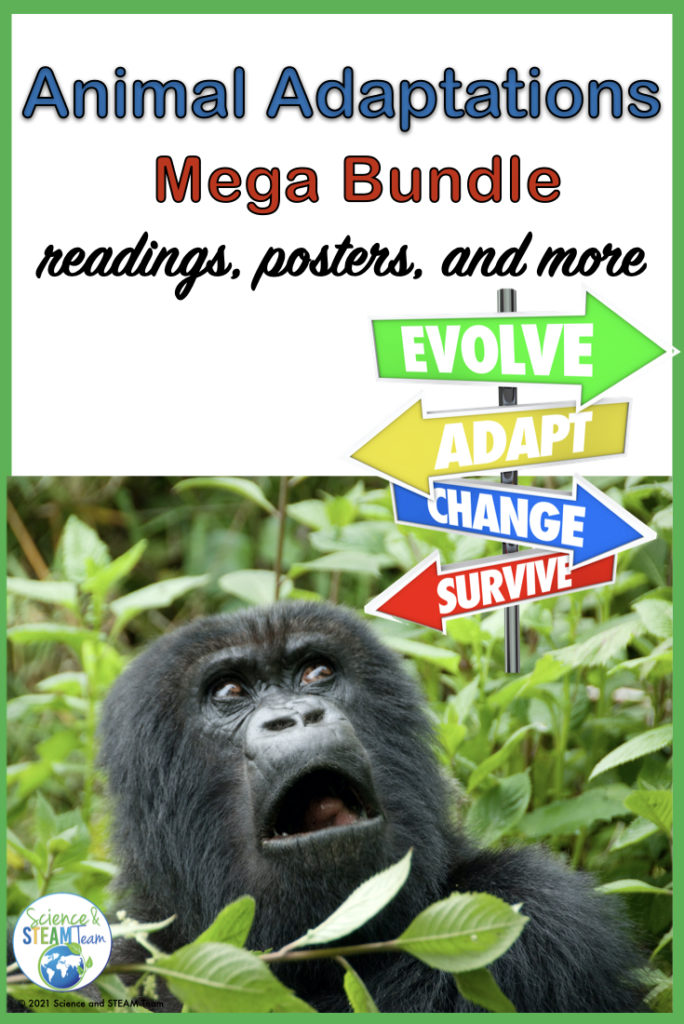Teaching children about animal adaptations is fun and engaging! I have yet to meet a student that doesn’t love to talk about animals! Here are some ideas to help you get started.
Watch Videos and Play Games About Animal Adaptations
I often engage students by introducing a concept with a video. There are many videos about animal adaptations. In my opinion, it is best to show one that has real animals rather than cartoon figures. This video starts out by discussing how children might adapt to different situations. Thus, it engages them and gets them thinking right away. The video goes on to talk about behavioral, physical, and life cycle adaptations. Before viewing this video, I had never seen life cycles discussed as an adaptation. If you prefer to only discuss physical and behavioral animal adaptations, end the video at 6:37.
Before watching the video, place students into three groups. Assign each group one section of the video (behavioral, physical, and life) to focus on. Tell them that they will be called on to tell the class about that particular section of the video, including some of the adaptations the animals make. Students can take notes if they want.
PBS has several games that students can play to help them learn more about animal adaptations. Check out the PBS website below.

Reading About Animal Adaptations
Read-alouds are another great way to introduce and/or reinforce concepts related to animal adaptations. Sandra Markle has written some really fun books! Besides laughing, Sandra’s “What if You Had Animal Parts Series” will get your students thinking! For example, in the book What If You Had Animal Eyes, she writes about chameleon eyes and the fact that this reptile can move each of its eyes separately. Therefore, it can see in two directions at once. This adaptation helps the chameleon to catch its prey. In this book, Sandra writes about ten other animals that have unusual eye adaptations. Her other books follow a similar pattern. These books also make good springboards for drawing and writing.

I have written a book about animal adaptations, too! This book has a page about a particular habitat. Then, there are several pages about animals that live in the habitat and how they adapt so that they can survive there. Animals of the arctic, desert, ocean, temperate forest, wetlands, and rainforest are covered. This book addresses first and third-grade Next Generation Science Standards which makes it perfect for classroom teachers.

Teaching About Animal Adaptations in General
Students need to know that animals make changes, or adapt so that they can survive in their environment. There are several ways that animals adapt.
Behavioral Adaptations

The way an animal acts is a behavior. There are two types of behavioral adaptations.
Some of those behaviors are inherited. They are instinctual and come naturally to the animal. These include such things as migration, hibernation, being nocturnal, defensive behaviors, courting, and mating behaviors.
Other behaviors are learned. These behaviors are learned through experience. Young animals learn by watching their parents and other animals in their species. Some examples of learned animal adaptations include, how to find food, how to get along with others, how to protect themselves, and how to build a shelter.
Physical Adaptations

Physical adaptations are changes that an animal makes over time to a physical or structural part of its body. Animals that live in the water need different adaptations than animals that live on land. Likewise, creatures that live in a cold environment need different physical structures than animals that live in a warm environment.
Some examples of physical adaptations include types of body parts. Animals have different types and numbers of feet. Some animals don’t have feet. A snake’s mouth is different than an alligator’s mouth. Some birds have long thin beaks, while others have short, stubby beaks. Some animals have claws, and some don’t. The claws on an eagle are different than the claws on a cat. Animals also have different body coverings. Birds have feathers, reptiles have scales, and mammals have fur. Color and patterns are physical adaptations. Camouflage helps an animal blend in with its habitat. Mimicry is an adaptation that helps a harmless animal look or sound like a harmful animal in order to protect itself. Each species must adapt in order to live.
Decision Time
Will students study one species of animal to see the different ways it can adapt to a variety of environments? Or, will students study one environment, and then learn about how multiple species of animals adapt to that environment?
I once had a guest speaker teach the students all about insects. Afterward, she asked small groups of students to create a new type of insect. Students used a variety of found items that she provided to make their insects. Groups shared their insect and told the other students how each structural adaptation helped the animal.
Another way to do this is to have students study a particular habitat. The entire class can study one habitat, or you can break students up into groups and have each group study a different habitat. Then, students pick an animal that lives in that environment and researches the adaptations it makes. Based on what students know about the habitat, the animal adaptations will make sense to them.
Animal Adaptations STEM Challenge
Of course, having students create their own animals is the perfect way to end a study about animal adaptations. This way students can showcase what they learned.
With students in lower elementary grades, it seems to work best to show them several pictures of one animal, say a dog. Discuss where a dog lives. Now, tell them that the dog is moving to the ocean. What type of adaptations will the dog need to survive in the ocean? Depending on the level of the student, you can ask them to make one to three adaptations that will help the dog. Let them work with a partner or in a small group to promote discussion. Have students draw and label the adaptations their animals have. Ask them to share their creatures with the class.
Older students can be asked to create animals that have at least two physical and one behavioral adaptation. They should give the animal a name, tell where the animal lives, and explain how the adaptations will help the animal. Once students have drawn their animal and labeled it with its name, environment, and adaptations you can stop there. However, it will be a lot more fun to have them build their animals if you have time! Here is a list of suggested materials to use: empty cans, small boxes, fabric scraps, sticks, pipe cleaners, scrap paper, index cards, clay, etc. Basically, anything you have available and want the students to use. This is a great project to enlist the help of your art teacher.
In addition, we have some animal adaptation resources that can help to make your lesson planning easier.

Have fun learning and creating,
Sarah




Leave a Reply
Your email is safe with us.